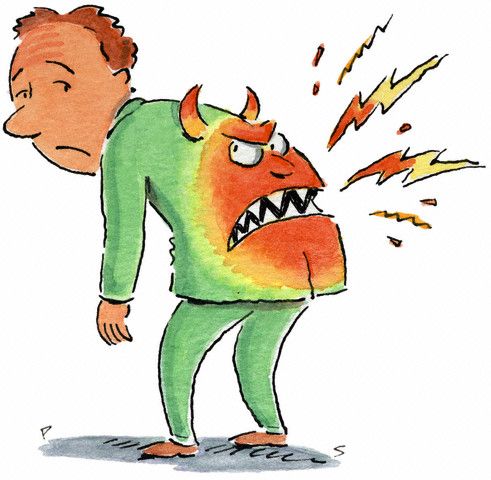Low back pain is an extremely common concern, affecting anywhere from 75 to 90 percent of people at some point in their lives. Low back pain is second only to the common cold as a cause of lost days at work and is one of the most common reasons to seek medical care, including acupuncture. In fact, one of the top reasons that people get acupuncture treatments is for low back pain. Please listen to what others say.(click)
The Oriental Medicine Perspective of Low Back Pain
In spite of the large number of pathological conditions that can give rise to low back pain, up to 85% of the cases are classified by Western physicians as 'non-specific'. When low back pain is looked at from an Oriental medicine perspective, it is seen as a disruption of the flow of Qi within the area, associated with a specific disharmony and then treated accordingly.
The basis of acupuncture is expressed in this famous Chinese saying: "Bu tong ze tong, tong ze bu tong" which means "free flow: no pain, no free flow: pain."
In other words, any kind of pain or illness represents an obstruction in the normal flow of Qi or life force. Simply put, acupuncture moves Qi, restoring free flow.

The disruption of Qi that results in low back pain is usually associated with the following three disharmonies:
Weak Kidney Qi - In Oriental medicine, the lower back is referred to as the “dwelling of the Kidneys”. The majority of chronic low back pain conditions are associated with Kidney Deficiency. Kidney Deficiency type pain is dull and comes and goes. It is usually aggravated by over tiredness and improves with rest.
Stagnation of Qi and Blood - When the flow of Qi along the meridians that traverse the lumbar region becomes congested, it is referred to as the stagnation of Qi and blood. This presents with a severe stabbing pain that is worse with rest and better with movement, tender to touch and can be accompanied by stiffness and tightness.
Invasion of Cold and Dampness - Cold, damp type pain is worse in the morning and when the weather is cold and damp. This type of pain improves with movement and the application of heat. Stiffness and contraction of back muscles that is aggravated by rest indicates cold predominance while swelling, numbness and a heavy sensation are indicative of dampness.
Studies on Acupuncture and Low Back Pain
While acupuncture is readily accepted as a viable option for low back pain in mainstream modern medicine, there has been little research to prove that it works. Now there are studies that support the clinical evidence.
In a German study, published in the Archives of Internal Medicine, 1,162 adults with chronic, lower back pain were divided into groups treated with the standard pharmaceutical and exercise therapy commonly used in Western medicine and acupuncture. The researchers reported that acupuncture provided relief and lasting benefit to nearly twice as many lower back pain patients as drugs and exercise. Forty-eight percent of the acupuncture patients reported at least a one-third decrease in pain along with improvement in their ability to function, versus 27 percent of the patients treated with conventional methods reporting such benefits.
In another recent study published in the Annals of Internal Medicine, researchers from the University of Maryland School of Medicine analyzed 33 studies covering more than 2,100 patients from around the world on acupuncture for low back pain.
Practitioners believe this process triggers the release of naturally occurring painkilling molecules called endorphin and keeps the body’s normal flow of energy unblocked. Clinical studies are measuring the effectiveness of acupuncture in comparison to more conventional procedures in the treatment of low back pain.
Ice or heat for Low Back Pain?
For acute inflammation, go with
ice, says Dr. Liu. He explains, "The cold shrinks the small blood vessels
in the area, which keeps blood and other fluids from flooding to the injury
site, thus decreasing swelling. It also slows nerve impulses in the area, which
interrupts the transmission of pain messages, and numbs the area much like a
local anesthetic." Also, cold aids in reducing tissue damage that acute
inflammation can cause.
Heat treatment encourages
circulation, which will reduce discomfort ... but heat is not a wise choice for
acute inflammation. Dr. Liu says that heat application to an inflamed site can
make swelling worse and cause even more pain.
In the absence of chronic
inflammation, choose heat treatment for low back pain, because heat opens up
blood vessels, which increases blood flow. This means more oxygen and nutrients
to the site, to encourage healing. Heat helps muscles relax, suppresses spasms
and reduces stiffness. Heat treatment for the low back will stimulate nerves,
interrupting pain signals.
Bear in mind that most back pain feels like a “true muscle strain of the low
back muscles,” but likely is not. A true strain — a genuine ripping and tearing
of muscle tissue — can occur only during a significant exertion, like lifting something you
shouldn’t. But, believe it or not, even most traumatic lifting accidents
probably do not involve actual muscle
tearing — it just seems that way. To tear any
muscle, you really have to pull on it very hard!
Telling the difference can be tricky
for both patients and professionals, but basically it boils down to whether you
suffered a nasty enough accident to have actually damaged you. Here’s a quick
checklist:
·
Did the pain
hit you suddenly during strong stretching or a moment of athletic intensity?
Were you lifting something way too danged heavy and/or awkward? In other words,
did you have an “oh, shit” moment?
·
Is there a
spot in the muscle that’s extremely sensitive to poking? (It may even be little
bit deformed — is there a bump or a depression?)
·
Is the skin
flushed and hot? Does it look puffy?
by Paul Ingraham, Vancouver, Canada